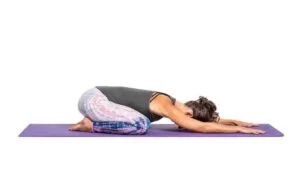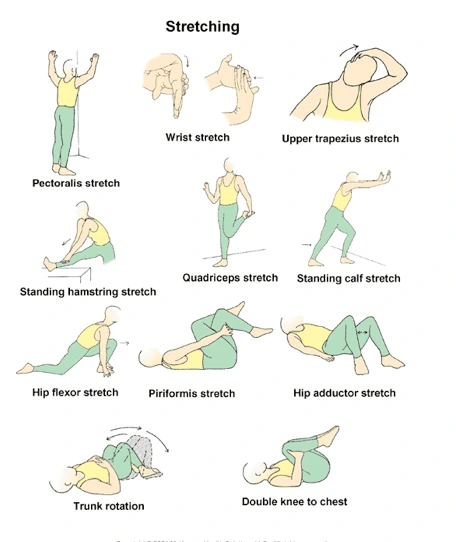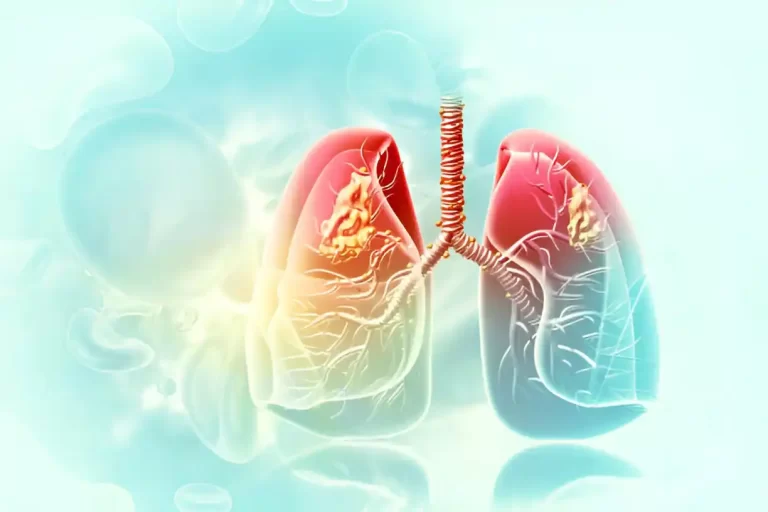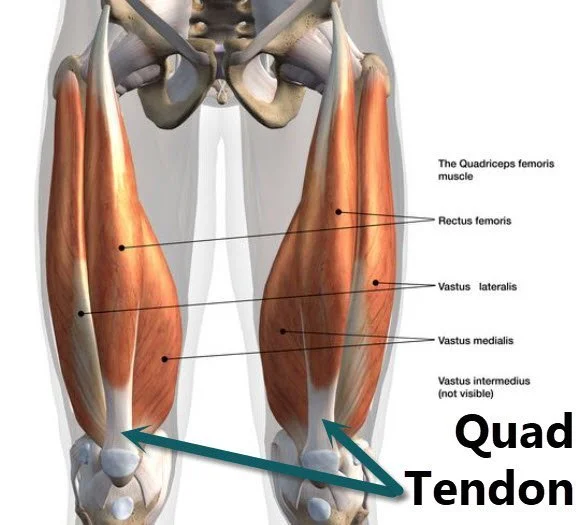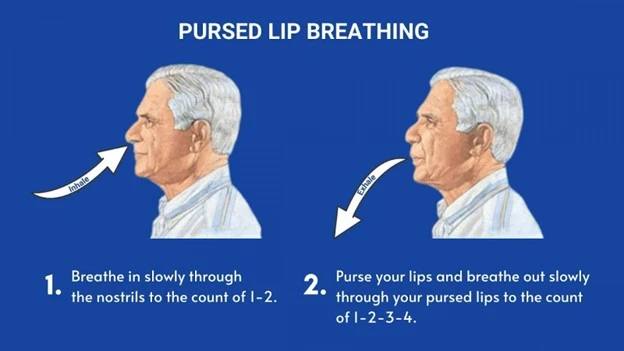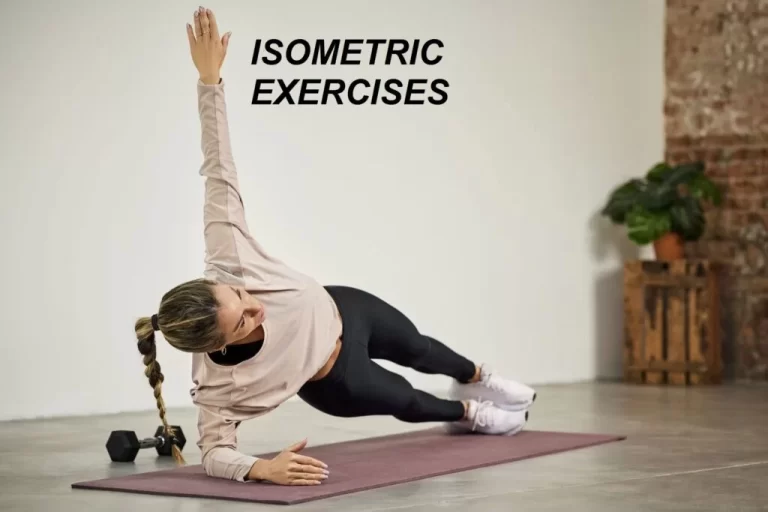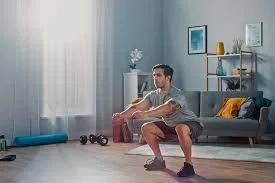Child’s Pose (Balasana)
Child’s Pose (Balasana) is a gentle restorative yoga pose that offers numerous benefits for both body and mind. This pose is often used as a resting posture in yoga practices, helping to calm the mind and relieve tension in the back, hips, thighs, and ankles.
Suitable for practitioners of all levels, Child’s Pose encourages deep breathing and fosters a sense of inner peace, making it an excellent choice for winding down or regaining focus during a yoga session.
What Is Child’s Pose in Yoga?
The child’s pose is referred to as a restorative stance in yoga. Your parasympathetic nervous system will be calmed by these poses, which focus on breathing awareness and physical relaxation.
The child’s pose is the forward bend position. It’s meant to help you relax and focus on your breathing. In addition to having numerous other health benefits, it stretches several stiff body regions, especially the neck, shoulders, ankles, and back.
Although “shishuasana” or “balasana” are other possible names, “child’s pose” is the most common phrase used in the West to describe the pose. Because yoga originated in India, the poses have Sanskrit names. Sanskrit defines “asana” as “pose,” “shishu” as “baby,” and “bala” as “child.”
Which muscles are used in Child’s Pose?
Muscle building is not a suitable use of a child’s position. This suggests that it isn’t meant to push or strengthen any muscles. Instead, it’s a stretch that focuses on lengthening the spine, thigh muscles, and hips.
- Trapezius muscles
- Erector spinae muscles
- Latissimus dorsi muscles
- Teres major muscles
- Oblique muscles
- Gluteus muscles
- Hip flexor muscles
What Health Advantages Does a Child’s Pose Offer?
Let’s now look at the advantages of child pose yoga, also called Balasana, which is a great way to fall asleep.
- Balasana helps to release any stiffness in the chest. This is also the rationale behind yoga’s reputation for promoting sound sleep.
- It makes it possible for people to depend on yoga for restful sleep by calming the back and spine.
- It eases the tightness in your hands and shoulders.
- The Child Pose is extremely suggested for people who are feeling vertigo all the time.
- This resting asana pose can aid in muscle relaxation and relaxation after a strenuous workday or exertion, which can encourage sound sleep.
- This position helps to ease stress and anxiety. One of the biggest advantages of child posture is said to be this.
- Your body’s internal organs are bent in Balasana Yoga, which encourages sleep and keeps them supple and active.
- This stretch lengthens and preserves the spine’s natural position.
- With support for the head and upper body during this yoga practice for better sleep, the Child pose helps reduce neck and lower back pain.
- It provides the legs, thighs, ankles, and hips with a significant amount of stretch.
- Doing this yoga before bed will lower your blood pressure.
- Sleep-related Balasana Yoga promotes blood flow by extending the entire body using a pillow.
- Therefore, by enhancing breathing quality, it soothes both the body and the psyche. This is why practicing yoga before bed is a smart choice. It’s commonly accepted that yoga enhances the quality of sleep.
- The Child Pose gives the muscles, tendons, and ligaments in your legs and knees the stretch they need.
- Furthermore, lordosis posture is lessened in this position.
What are the Preparatory Poses for Child’s Pose?
- Vajrasana
- Adho Mukha Svanasana
- Paschimottanasana
How to do a Child’s Pose?
- On the yoga mat, lower yourself to your hands and knees.
- In order to maintain your feet on the floor and your big toes in contact with each other, lift your knees slightly off your mat.
- The shoulders, jaw, and eyes should all be at ease. Put your forehead on a block or two stacked fists if placing it on the floor hurts. The vagus nerve is stimulated and a “rest and digest” response is encouraged by placing an energy point between the brows in the center of the forehead. Choose a comfortable area on your forehead to achieve this relaxing effect.
- Extending your arms in front of you with the palms facing down or bringing them back to your thighs with the palms facing up are the two options.
- You can also stretch your arms forward with palms facing up for a shoulder release, or bend your elbows until your palms contact and place your thumbs at the back of your neck.
- For as long as you like, re-establish a connection with the constant inhalations and exhalations of your breath.
Child’s Pose (Balasana) Video:
What are the Follow-up Poses for Child’s Pose?
- Pigeon Pose
- Tri Pada Adho Mukha Svanasana
- Frog Pose I
What are the Beginners’ Tips for Child’s Pose?
- The child’s pose aims to increase hip and back flexibility while feeling relaxed and at ease. To find the variation that works best for your body, read this article on changing the child’s stance.
- Taking the knees wider (to the width of a yoga mat) is more comfortable for many people. If your breasts or tummy are larger, this also frees up more room.
- If your forehead doesn’t touch the floor comfortably, support it with props or fists.
- If necessary, place padding beneath your ankles or knees.
What are the Modifications and Variations for Child’s Pose?
- If it is more comfortable for you, you can decide to keep your knees together rather than apart. Similarly, you can place a rolled towel beneath your shins to relieve tension on your ankles or curl your toes under if flat feet hurt.
- For extra support and cushioning, place a towel or yoga blanket underneath the knees.
- To get a more restorative version, place a pillow or bolster beneath your chest or stomach and hold the pose for ten minutes or more.
- Widening your knees will allow you to stretch your hips more deeply.
- Rabbit pose: The knees can be wide during pregnancy if necessary. In Bikram Yoga, it is performed with the head and arms pointing back towards the feet and the tailbone elevated until the thighs are vertical, creating a strong flexion of the spine.
- In “Happy Baby Pose,” also called Ananda Balasana, the body lies on the back, the thighs are by the side of the body, the knees are bent, and the hands are gripping the toes.
- An intermediate position between Balasana and Adho Mukha Shvanasana (Downward Dog Pose), Uttana Shishosana, also known as “Extended Puppy Pose,” involves stretching forward from all fours until the forehead and The forearms are flat on the ground and the thighs are vertical.
What are the Types of Child’s Pose?
Child’s Pose is only available in one variety. :
Happy Baby Pose (Ananda Balasana)
What Is Happy Baby Pose?
Also Known as Dead Bug Pose.
A passive, healing hip opener, the happy baby posture is frequently done by itself or as part of a cool-down just before Savasana at the end of a yoga session. The Sanskrit term for the joyful baby posture is Ananda Balasana, where Ananda means “joy or bliss” and Bala means “child.” Because the hands and feet are suspended in midair during this pose, some yogis call it the “dead bug pose.”
With the help of this pose, yogis can safely and healingly open their hips, releasing any tension that may have been stored there by walking, working out, or spending a great deal of time in a car or sitting at a desk. Depending on how much you choose to flex or straighten your legs, the pose can help to gently realign the spine, provide a deep stretch for the hamstrings, and Stretch for your inner thighs and groin.
Benefits of performing Happy Baby Pose:
- You may stretch your inner thighs, hamstrings at the back of your thighs, and groin by opening your hips in this pose.
- Both the sacrum and the back are released. You can determine which hip to work on for increased mobility and flexibility if you notice that one is tighter than the other.
- This pose is recommended in yoga to help you relax and center yourself while relieving stress and exhaustion.
- You have undoubtedly observed a baby grasping its toes and playing with them, possibly feeling envious of that basic motion and awe.
- Grasping your toes as a baby indeed restores your spine’s flexibility.
Preparatory Poses for Happy Baby Pose :
- Child’s Pose (Balasana)
- Hero Pose (Virasana)
How to do Happy Baby Pose?
A sturdy, padded surface or an exercise mat is required. You might need to use a folded blanket, cushion, or little pad to support your neck.
Find a neutral spine position while lying supine so that your spine’s natural curves are present but not accentuated.
Pull your knees in close to your chest. Allow your hip sockets to relax as you raise your knees so that your legs rise but your hips remain lowered. Maintain a neutral spine alignment and place your tailbone on the mat.
Show the soles of your feet to the roof by flexing them.
Gradually draw down on your big toes with your first two fingers. As you relax, your hips loosen up, allowing your knees to get closer to your chest as your feet remain flat on the roof. Another approach is to grab the arch of the foot by drawing your hands up to the outside of it.
Breathe deeply and take your time. Savor the slight hamstring stretch.
Allow your back to drop naturally into the earth; do not force it downward. Be content, baby.
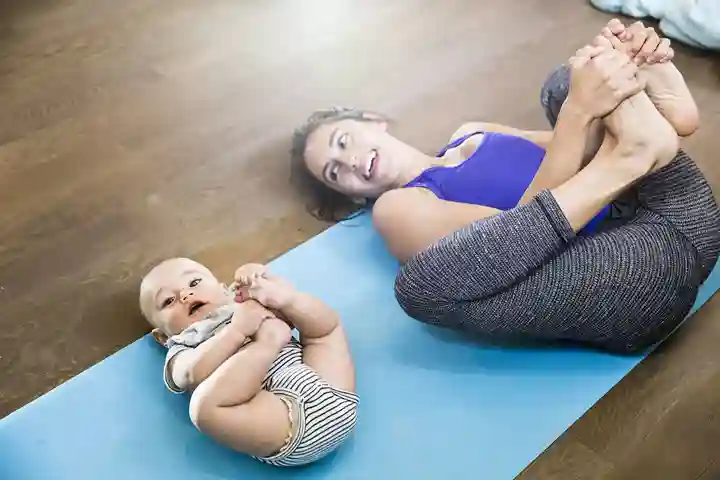
Follow-up Poses for Happy Baby Pose :
- Downward-Facing Dog (Adho Mukha Svanasana)
Beginner’s Tips for top Happy Baby pose:
Here’s how to maintain a gentle and encouraging tone:
- Hold your shoulders firmly against the mat. It can be hard for your spine to raise your shoulders. Try grasping your shins or ankles if they’re rising off the mat.
- Make sure your head stays grounded. Your neck may get strained or hurt when you raise your head. Try placing a towel or rolled blanket beneath your neck if you’re having trouble keeping your head down.
- You’ll get the most out of this pose if you just relax; there’s no need to exert yourself or work hard.
- Try holding each foot with a yoga strap looped over the middle arch if you find it difficult to grasp them with your hands.
Happy Baby modifications :
Adjustments to Happy Baby might enhance the posture’s comfort and accessibility.
Use a yoga strap
The goal of Happy Baby Posture is to be grounded. Try wrapping a yoga strap around the arch of each foot if your head, neck, or shoulders are rising off the ground or if you have trouble holding your feet.
Use your elbows to separate your knees
Try splitting your knees with your elbows if they are persistently attempting to kiss. You will be able to optimize the stretch and slip into the correct position with the help of the additional pressure.
Hold one leg at a time
If you have trouble keeping your head, shoulders, neck, or pelvis on the floor, lifting one leg at a time can help you ease into the stretch. In order to balance the flexibility of your limbs, it might also help you isolate each leg.
- Grab your shins or ankles. If your feet are too far away, try reaching for your ankles or shins.
- Make use of a folded blanket. Beginners frequently make the mistake of lifting their head and neck off the mat, which strains their upper back. To maintain the back of your neck long and relieve any tension in your torso during this pose, place a folded blanket beneath your head if you have a neck injury or simply need more support.
- Encircle the big toes with peace fingers. You can create “peace fingers” and wrap them around your big toes rather than grabbing the outside borders of your feet. Compared to gripping the outsides of your feet, this exercise gives you a firmer hold and allows you more leverage to bring your legs in toward you and widen your hips.
- The insides of the feet are grasped by hands. You can also feel how the inner borders of your feet feel on your body by reaching for them.
Common Mistakes while Happy Baby pose
Avoid these mistakes if you want to get the most out of this activity.
Shoulders Raised
To keep the shoulders firmly planted on the floor and the legs relatively parallel, try to maintain the position. If your hips are extremely tight, this could be challenging. If you see that your shoulders need to rise off the mat, adjust your hand placement (for example, at the shins or ankles) so that your shoulders stay on the mat and your chest stays wide.
Chin Lifted
Your chin will be raised if your neck is not in contact with the mat, putting your neck in danger of strain. This is frequently brought on by a lack of flexibility, which makes it difficult to use your hands to grab your feet. Grab your shins or ankles instead.
Safety and Precautions for Happy Baby Pose:
The Happy Baby workout should not be performed if you are pregnant or have a knee or neck ailment.
Ask your teacher about any changes or different workouts.
Release the stance if you experience any pain during this workout.
Contraindications for Happy Baby pose:
- Pregnancy
- Knee injury
- Neck injury
What is a Common Mistake you can’t make while Happy Baby poses?
Even though balasana is one of the more tranquil yoga postures, form is important. Keeping your forehead on the ground is crucial. Place a folded blanket beneath your buttocks to fill the space if you’re still working on the flexibility to maintain your forehead on the floor and your sitz bones resting on your heels.
It’s best to perform this pose at least an hour after eating because it may produce some compression in your stomach. During a child’s posture, it’s easy to forget to take deep breaths. Focus your attention on the breath.
You should maintain a neutral neck posture. Use a yoga block, cushion, or other prop to relieve pressure on your neck if you notice that it is bending.
What are the Precautions and Contraindications for a Child’s Pose?
When performing the Balasana Yoga, have the following points in mind:
- You can use a pillow or cushion for support if you have trouble or find it uncomfortable to place your head on the mat’s ground.
- Yoga massages the digestive tract and puts pressure on the bowels, so avoid doing it right before bed if you have diarrhea.
- Avoid adopting this sleeping position if you have knee problems or leg injuries.
- You should avoid doing this yoga right before bed if you have high blood pressure.
- Even though yoga has been shown to improve sleep, if practicing sleeping poses doesn’t help your insomnia, you might need to consult a doctor.
- Although it puts pressure on the tummy, pregnant women are not allowed to do this yoga pose.
FAQs
What are the benefits of Child Pose?
The main ways that Balasana, also known as Child’s Pose, improves health are by lowering stress, increasing spinal flexibility, opening the hips, facilitating digestion, easing menstruation pain, encouraging relaxation, and improving sleep quality.
For what length of time should you maintain the child’s pose?
3 to 5 minutes
Sit on your heels and use a block or stacked fists to bring your head to the floor. You can hold your hands out in front of you, by your side, or under your forehead.
Who should not do Child Pose yoga?
Injury and Surgery: Students should refrain from this activity if they have recently had surgery on their ankles, shoulders, knees, or hips, or if they have any injuries. This pressure in the abdomen should be avoided by postpartum mothers who have had a cesarean section.
What are the mistakes for a child’s pose?
Children’s Pose Typical Errors
It’s best to perform this pose at least an hour after eating because it may produce some compression in your stomach. It’s easy to overlook the importance of taking deep breaths during a child’s pose. Keep your attention on the breath. You should maintain a neutral neck posture.
References:
- Vallie, S. (2022, July 22). How to do a “Child’s” yoga pose. WebMD. https://www.webmd.com/fitness-exercise/how-to-do-childs-pose
- Ryt, A. P. (2024, July 7). How to Do Child’s Pose in Yoga. Verywell Fit. https://www.verywellfit.com/childs-pose-balasana-3567066
- EkhartYoga. (2020, November 6). Childs Pose Balasana – Ekhart Yoga. Ekhart Yoga. https://www.ekhartyoga.com/resources/yoga-poses/balasana-childs-pose
- Dr.Nidhiphysio. (2024, September 29). Balasana(Child’s Pose): Health Benefits, How to do?- Variation | Mobile P. Mobile Physiotherapy Clinic. https://mobilephysiotherapyclinic.in/balasana-childs-pose-yoga/

